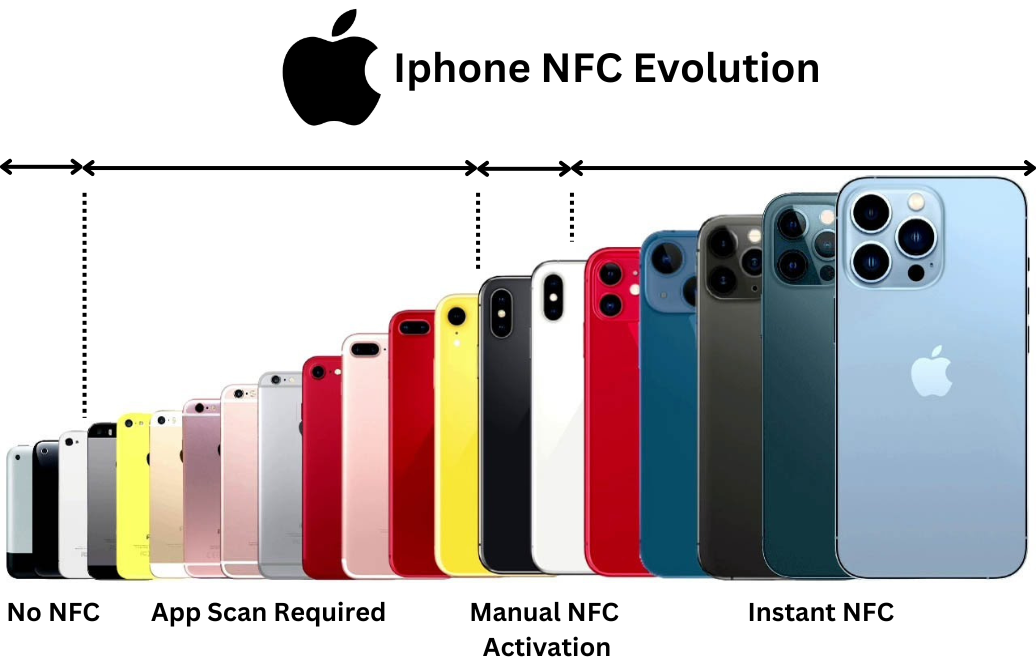Enhance Engagement with NFC Technology

NFC Tag Range and Compatibility
Introduction to NFC Technology
NFC (Near Field Communication) technology is revolutionizing how businesses and consumers interact by enabling wireless data exchange over short distances. This technology facilitates various applications such as contactless payments, smart business cards, and enhanced consumer engagement. NFC tags and devices communicate through electromagnetic fields, allowing for instant, secure data transfer when devices are in close proximity. The integration of NFC in smartphones and other devices is driving its adoption across sectors like retail, healthcare, and more. With the growing demand for digital and contactless solutions, NFC technology is becoming a cornerstone of modern digital interactions (NFC Tagify).
Understanding NFC Tag Range
NFC tags typically operate within a short range, usually up to 4 centimeters. This limited range enhances security by ensuring interactions occur only when devices are in close proximity. The range can be influenced by several factors, including the size and quality of the antenna within the tag. Larger antennas generally allow for greater energy harvesting from the NFC reader, slightly increasing the operational range.
However, there are diminishing returns; too large an antenna can become inefficient and mismatched with the reader's design. The type of device used also plays a crucial role; modern smartphones typically support a range of NFC tag sizes but perform best with tags designed to match their antenna configuration. The quality of the NFC tag, including its design and the materials used, can significantly impact the actual scan distance. Therefore, choosing high-quality tags and ensuring proper antenna design are essential for optimal performance and user experience.
Types of NFC Tags and Their Applications
NFC tags come in various types, each suited to different applications based on their memory capacity, read/write capabilities, and security features. Here are some common types:
-
NTAG Series: These are widely used for applications like vCard sharing, URL redirection, and small data storage. They are popular for their balance of memory capacity and cost-effectiveness, making them ideal for everyday consumer use and marketing campaigns.
-
ICODE Series: Primarily used in inventory and library management due to their higher memory capacity and range. These tags are suitable for tracking and authentication purposes, ensuring efficient asset management.
-
MIFARE Series: Known for their enhanced security features, MIFARE tags are commonly used in access control systems and public transportation. They support encryption and can store more data, making them ideal for secure transactions and identity verification.
Each type of NFC tag serves specific needs, from simple data sharing and marketing to complex access control and inventory management, showcasing their versatility and broad applicability in various industries.
NFC Tag Compatibility with Devices
NFC technology is widely supported across modern smartphones and other devices. Most Android and iOS devices from recent years are equipped with NFC capabilities. For instance, iPhones have supported NFC since the iPhone 6, with expanded functionalities in later models allowing both reading and writing of NFC tags. Similarly, Android devices offer comprehensive NFC support, including read/write, card emulation, and peer-to-peer communication.
Besides smartphones, NFC compatibility extends to other devices such as tablets, smartwatches, and various IoT (Internet of Things) devices. Wearable devices, such as smartwatches, can use NFC for mobile payments, access control, and data transfer. NFC tags are also compatible with contactless payment cards, allowing secure transactions with a simple tap.
This broad compatibility ensures that NFC tags can be utilized in diverse environments, from mobile payments and secure access control systems to interactive marketing campaigns, enhancing the user experience and broadening the scope of NFC technology applications.

Practical Applications of NFC Tags
NFC tags are used in a variety of practical applications across different industries, showcasing their versatility and convenience:
-
Mobile Payments: NFC tags enable secure and quick transactions by allowing users to make payments by tapping their NFC-enabled device or card at a payment terminal. This technology is widely used in contactless payment systems like Apple Pay and Google Wallet.
-
Access Control: NFC tags are used in access control systems to grant secure entry to buildings or restricted areas. Employees or authorized personnel can use NFC-enabled cards or key fobs to gain access, enhancing security and efficiency.
-
Marketing: NFC tags are embedded in promotional materials, posters, and products to create interactive marketing experiences. By tapping their smartphones on these tags, consumers can access additional content, such as product information, videos, or special offers, thus boosting engagement and providing valuable data to marketers.
-
Healthcare: In healthcare settings, NFC tags are used for patient identification, medication tracking, and accessing medical records. This technology helps streamline processes, improve patient safety, and enhance overall healthcare delivery.
These applications demonstrate the wide-ranging potential of NFC tags, making them valuable tools for improving efficiency, security, and customer engagement in various sectors.
NFC Business Cards: Enhancing Networking
NFC business cards are revolutionizing professional networking by offering a seamless and dynamic way to share contact information. These cards enable individuals to transmit their details directly to a smartphone with a simple tap, eliminating the need for manual data entry. This ensures that the information shared is always accurate and up-to-date.
The rise of NFC business cards can be attributed to their convenience and environmental benefits. Unlike traditional paper cards, NFC cards can be updated digitally, reducing waste and promoting sustainability. Furthermore, these cards enhance user experience by integrating interactive features such as links to portfolios, social media profiles, and promotional videos.
Businesses across various industries, including tech, healthcare, and finance, are adopting NFC business cards to streamline their networking processes and showcase their commitment to innovation. As digital networking becomes more prevalent, NFC business cards are set to become a standard tool in professional exchanges, offering a modern, eco-friendly alternative to traditional methods.
Different types of NFC business cards available include:
- Coated metal cards (Hybrid) front side engraved back side printed
- Pressed Metal cards (Hybrid) front side engraved back side printed
- Brushed metal cards (Hybrid) printed on both sides
- Full metal cards engraved on both sides



These options allow businesses to choose the best fit for their brand and networking needs.
We at NFC Tagify provide all sort of NFC Solutions or you may contact us: Tel. 01600800080, Email: info@nfctagify.com









